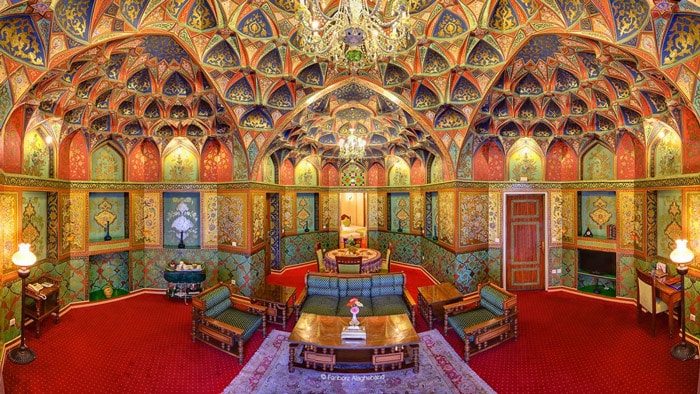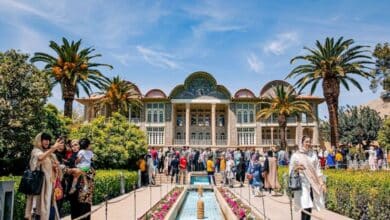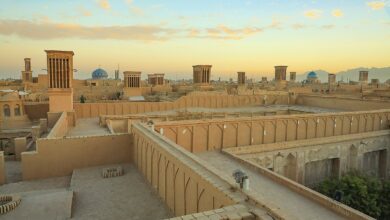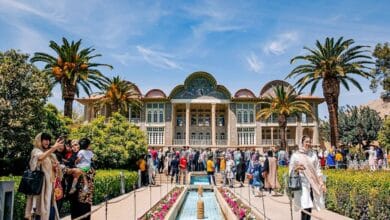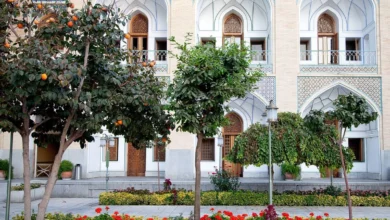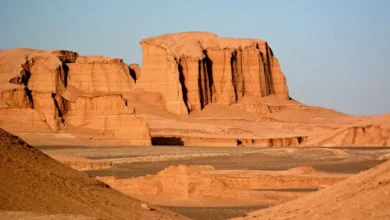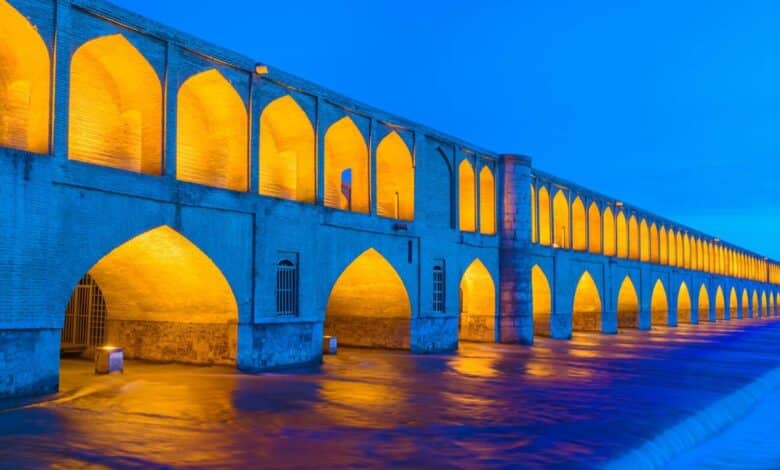
Si-o-Se Pol, also known as Allahverdi Khan Bridge, is recognized as one of the masterpieces of Iranian architecture and bridge construction. It is located in the city of Isfahan, Iran. The reflection of the bridge in the waters of the Zayande Rud River creates an enchanting beauty.
There are 11 other bridges spanning the Zayande Rud river, but Si o Se Paul is the most famous due to its large size and architectural excellence. This bridge is also the longest bridge in Iran and is included in the list of national monuments of Iran.
Contents
History of Si-o-Se Pol Bridge
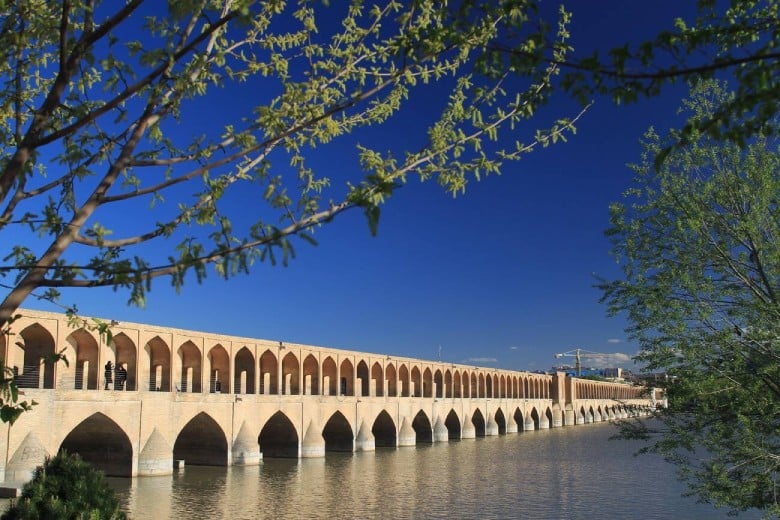
The history of this beautiful bridge dates back to the Safavid era, when grand celebrations were held near it. Ceremonies held under the bridge included the water and rose sprinkling ceremony, the Khaj Shoyan ceremony, and the Nowruz celebration. In the Water and Rose Sprinkling ritual, it was customary for people to sprinkle water and rose water on each other’s heads and faces.
The Khaj Shoyan ceremony was especially aimed at the Armenians of Isfahan and commemorated the baptism of Jesus Christ. Nowruz, one of Iran’s official celebrations, is held to commemorate Iranian New Year and lasts for seven days.
The Magnificent Architecture of Si-o-Se Pol Bridge
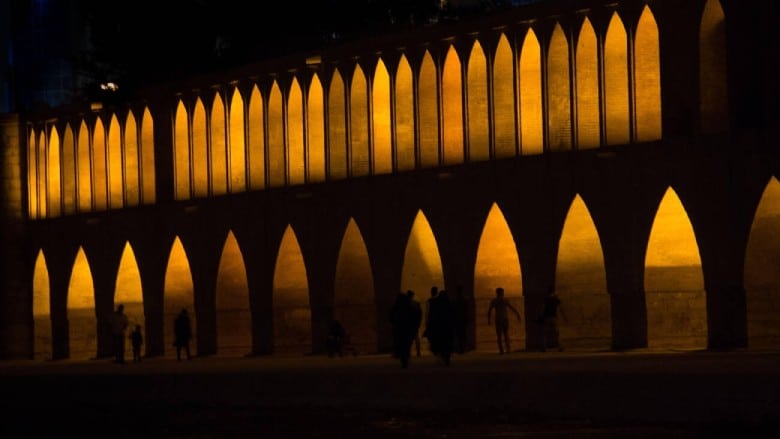
This beautiful bridge, considered one of the architectural masterpieces of Iran, has 33 spans, is 300 meters long, and 14 meters wide. It is constructed using materials such as stone, brick, Sarooj mortar, and gypsum. Egg whites were used for the mortar of this bridge, and it is said that this made it extremely strong.
There are very beautiful arches on both sides of the bridge, allowing you to enjoy the scenic view of the river while walking on the bridge. Additionally, there are 99 small arches on the pedestrian walkways of the bridge, which used to have painted panels installed in them in the past.
People would also sit on these arches for conversations, and there was a teahouse inside one of these arches. Some geology and cultural heritage experts believe that the bridge columns are designed in a way that they must be in contact with water and moisture is essential for its durability and strength. Therefore, the drying up of the Zayandeh Rood River could potentially affect the stability of the bridge.
Fun Activities Near Si-o-Se Pol Bridge
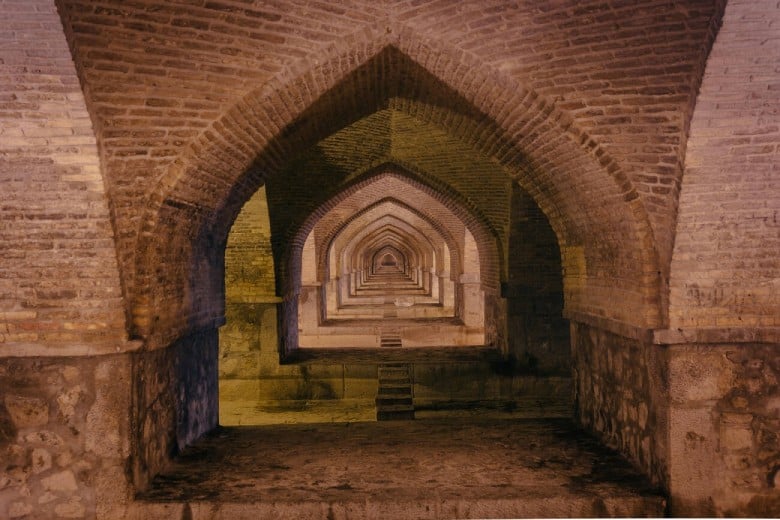
Hiking
A leisurely stroll across the Bridge is a popular activity. As you cross the bridge, you can enjoy beautiful views of the river and surrounding area.
Cycling
If you have a bicycle, you can stroll around the bridge or cycle along the riverside path.
Boat trip
If the river is full enough, you can rent a boat and take a boat trip on the Zayandeh Rud River. It will be a wonderful and relaxing experience.
Photography
Si-o-Se Pol offers breathtaking views and is a great place for photography enthusiasts.
You can take beautiful photos with the wonderful bridge in the background.
Reason for the Name Si-o-Se Pol Bridge
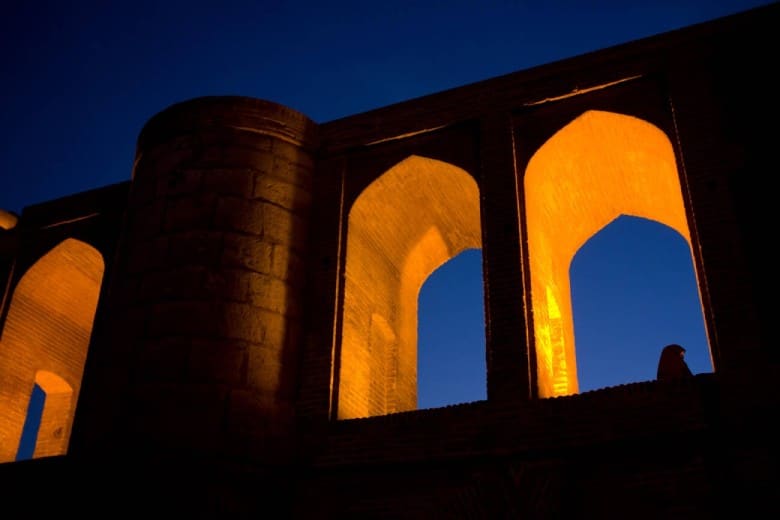
As for the reason behind the name “Si-o-Se Pol”, there have been various explanations throughout history:
Thirty-Three Arches
The bridge is named Si-o-Se Pol, which translates to “Bridge of Thirty-Three.” This name refers to the 33 arches that span the Zayandeh Rud River.
Sacred Number
Some believe that the number 33 holds religious or symbolic significance. It is associated with the goddess Anahita, who was the goddess of water in ancient Persian mythology.
Historical Figures
Another theory suggests that the bridge was named after a person named Allahverdi Khan, who introduced a 33-letter Georgian alphabet. This theory proposes that the bridge was constructed with 33 spans in accordance with this alphabet and was named after it.
Evolution of the Name
Originally, the bridge had 40 spans and was known as “Chehel Cheshmeh” or “Forty Springs.” However, over time, the number of spans reduced to 33, and the bridge became associated with its current name.
In summary, Si-o-Se Pol is named after the 33 arches that grace the bridge, with possible connections to religious symbolism and historical figures.
Attractions near Si-o-Seh Pol Bridge
In addition to Si O Se Pol, there are many other tourist attractions that you can visit in Isfahan city.
The famous tourist attractions near Si-o-Se Pol are:
Naqsh-e-Jahan Square
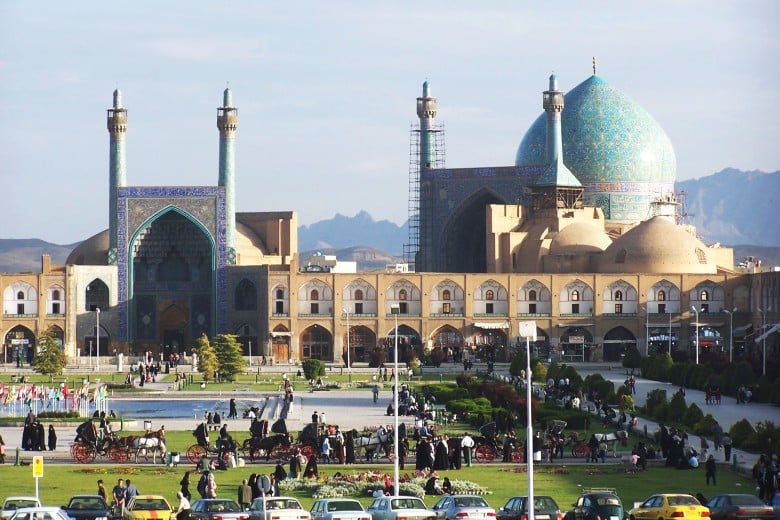
One of the world’s largest squares, Naqsh-e-Jahan Square is a UNESCO World Heritage Site and features several landmark attractions. Sheikh Lotfollah Mosque, Ali Qapu Palace, the famous Imam Mosque, and more.
Hasht Behesht Palace
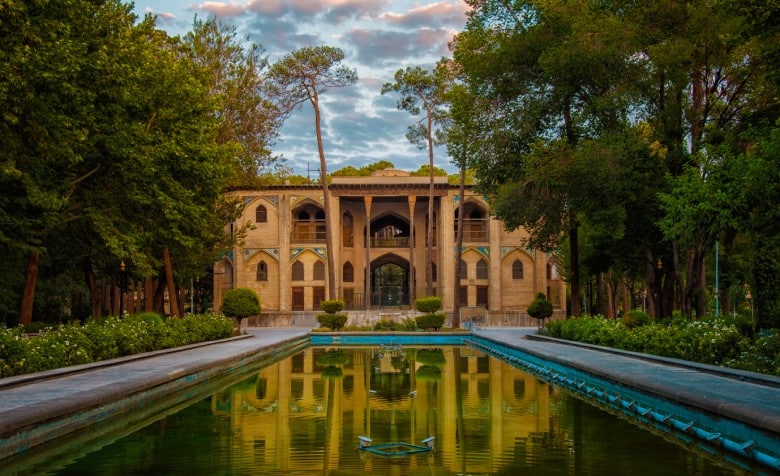
This beautiful palace is set in a garden and features intricate Persian architecture and frescoes. It was built during the Safavid era and is a popular tourist destination.
Chehel Sotun Palace
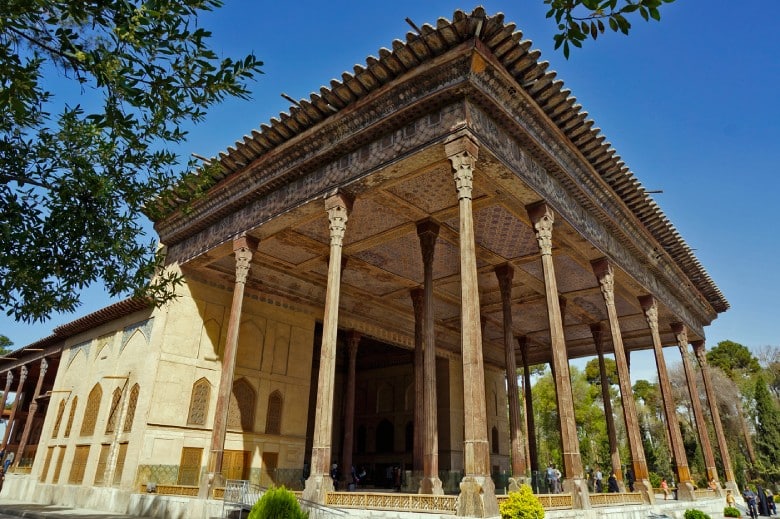
Known as the Palace of 40 Pillars, this palace features stunning mirrored halls, beautiful gardens and a reflecting pool. It is a masterpiece of architecture from the Safavid period.
Ali Qapu Palace
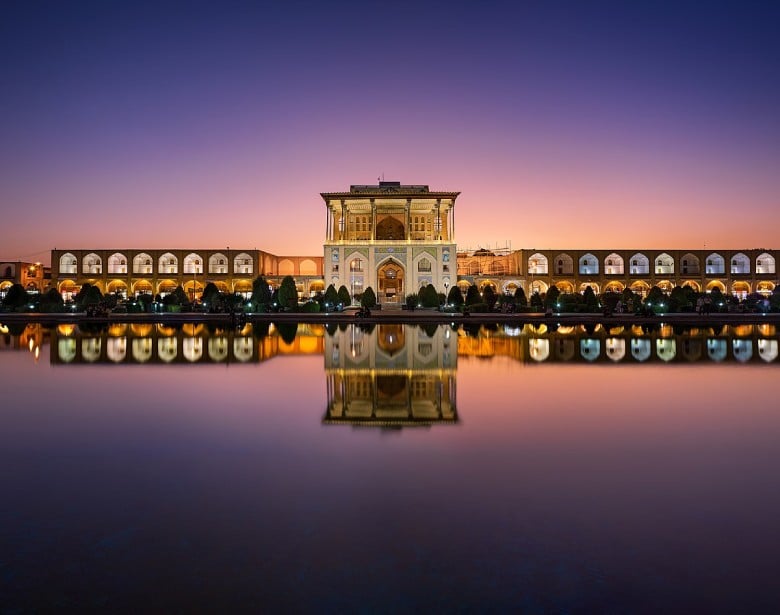
Located on the west side of Naqsh-e-Jahan Square, Ali Qapu Palace is known for its luxurious design, music room and spectacular views of the square and city.
Khaju Bridge
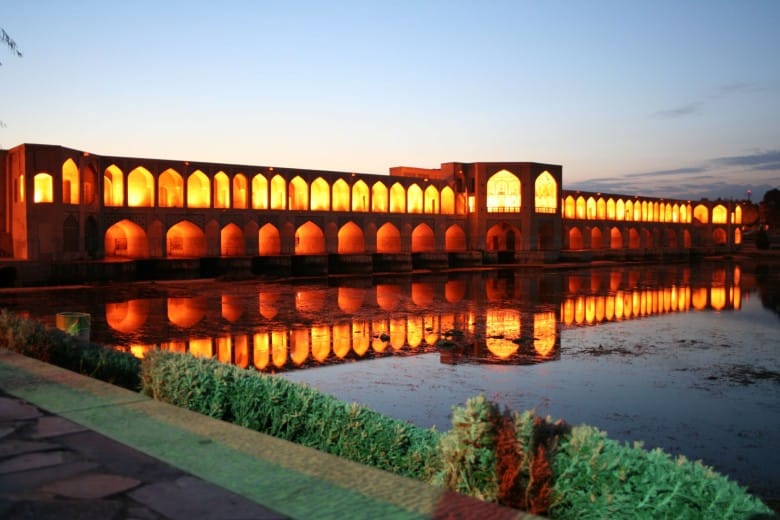
Another historic bridge in Isfahan, Khaju Bridge offers beautiful views of the Zayand-e-Rud River and is especially enchanting at sunset.
Isfahan Natural History Museum
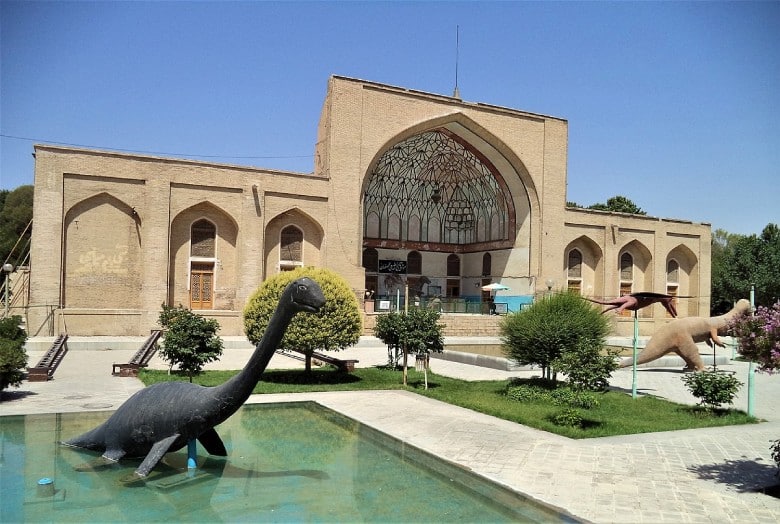
This museum features a wide range of natural history exhibits, including fossils, minerals, and stuffed animals.
Vank Cathedral
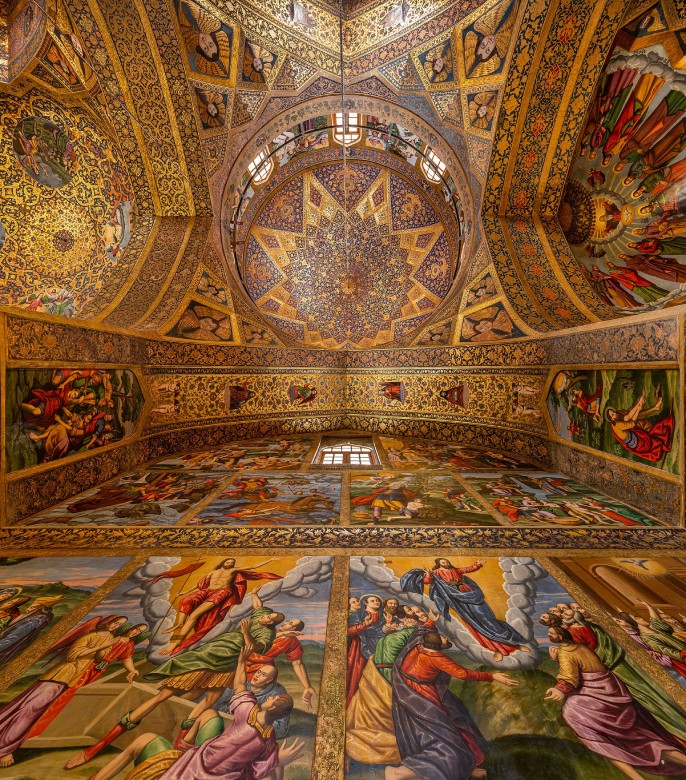
Located in the Armenian quarter of Isfahan, Vank Cathedral is an impressive example of Armenian architecture and art. There is a museum and beautiful frescoes.
These are just a few of the many attractions you can explore in Isfahan, apart from the beautiful Si-o-Se Pol Bridge.
Hotels and Restaurants Near Si-o-Se Pol Bridge
If you want to stay near this beautiful bridge, here are some hotels and restaurants near this location.
Hotels
– Abbasi Hotel (approximately 1 km away)
– Sepahan Hotel and Parsian Suite Hotel (approximately 2 km distance)
–Setare Hotel and Karoon Hotel (approximately 3 km distance)
Restaurants
– Ghasr -e Monshi and Shahrazad Restaurant (about 2 km away) – Naghsh-e Jahan Restaurant (3 km away)
– Khaneh-e Gustar and Toranj Restaurant (about 4 km away)
These hotels and restaurants offer a variety of services and are ready to accommodate visitors near this beautiful bridge.
The best time to visit Si-o-Se Pol bridge
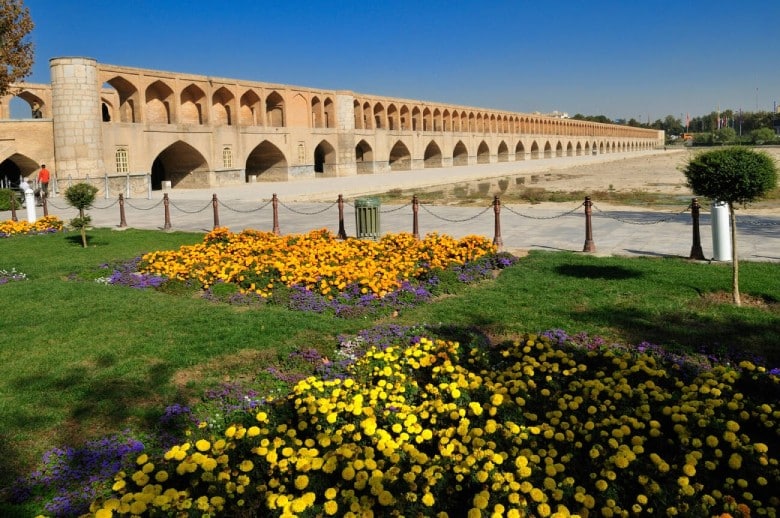
The right time to visit Si-o-Se Pol bridge, can vary depending on personal preferences and the specific climate conditions in Isfahan. However, considering the current drought in Iran, it is recommended to visit during seasons when the river is full, such as winter and spring. During these seasons, you can enjoy the beauty of the bridge with the river flowing underneath. The nights in Isfahan are also enchanting and you can appreciate the extraordinary lighting of the bridge while strolling on it. During the day, you can observe more details of the bridge’s architecture.
How to access Si-o-Se Pol Bridge
This beautiful bridge is located in Engelab Square, at the beginning of Chahar Bagh Street in Isfahan. You can get there not only by private car, but also by city bus or subway.
In this article, we have tried to introduce you to one of the most beautiful tourist spots in Iran.
If you want to know more about Iran’s cultural, historical and recreational attractions, we recommend reading other articles on this website.
Si-o-Se Pol Bridge” FAQs
What is the Si-o-Se Pol Bridge?
The Si-o-Se Pol Bridge, also known as the Bridge of 33 Arches, is a historical bridge located in Isfahan, Iran. It spans the Zayandeh River and is famous for its impressive architecture and design.
How long is the Si-o-Se Pol Bridge?
The Si-o-Se Pol Bridge is approximately 297 meters long, making it one of the longest bridges of its kind in Iran. It consists of 33 arches, each beautifully constructed and adding to its grandeur.
What is the significance of the Si-o-Se Pol Bridge?
The Si-o-Se Pol Bridge holds great historical and cultural significance. Besides serving as a bridge across the river, it also acted as a meeting place, a recreational area, and a symbol of Isfahan’s architectural brilliance. It has become a popular attraction for tourists and locals alike, offering stunning views of the river and surrounding scenery.
How to get to the Si-o-Se-Pol Bridge
The bridge is located in the southern part of Isfahan, Iran, on Chahar Bagh Avenue. It is easily accessible by taxi, bus, or metro. The nearest metro station is Siosepol Station.
What is the cost to visit the Si-o-Se-Pol bridge?
Cost to visit the Si-o-Se-Pol Bridge: There is no entrance fee to visit the Si-o-Se-Pol Bridge. However, you may need to pay a small fee to take a boat ride on the Zayandeh River.
